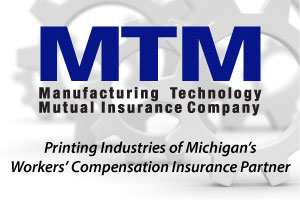By Charles Groce, CEO Pearl Street Consulting
I recall back in 2009 while working as an IT manager at a commercial printing company which handled a lot of publication work how excited we were to start offering our customers “flip-book” or “eZine” versions of their printed publications. This was, we thought, really getting into the business of internet publication. And the best part of it all was that we could obtain flip book licenses at a relatively low cost and without much additional work added on to our prepress workflow, allowing us to tack on another invoice line item. It was great! We didn’t even need a web designer!
Then came the rise of the smart phone, with some 35% of internet users today only consuming online content on their mobile devices. PDFs designed for printed publications, whether in flip book format or whether read simply using a PDF reader, didn’t provide a pleasant reading experience on mobile because of the multiple column format of most well-designed publications. Users of smart phones simply do not want to zoom in to read and zoom out to navigate. Consumers of content get a much less distracting reading experience with the mobile responsive web, which automatically formats text and graphical content as single-column while maintaining a look consistent with the full web version.
The undeniable importance of web and mobile publishing today begs the question: Is it possible for publishers and their partners in the printing industry to start with a workflow strategy which begins with content intake and produces from this process not only a fully designed printed publication, but also a mobile-responsive web site, and perhaps even email marketing content?
The answer is yes, of course. We could just add more people to the process. But money is made when processes are done efficiently, and in the world of digital information this means leveraging software intelligently to create workflow automation.
I’ve written a lot about open source solutions and how they can satisfy a whole range of operational needs for companies in the printing industry. Open source technology can also be used to vastly extend the reach of publication content, and this can benefit both printers and content creators alike.
Think about it. Many magazine publications in the abstract are really just a set of articles, each of which represent one of the many goals of the publishers. In academia, this goal may be recruitment to individual programs like nursing or film making. In business, publication content may be promotional in nature and designed to attract new customers. On behalf of institutions, content may be more informational in design.
Regardless of the end goal of content, in the internet world, each of these articles would necessarily have their own associated URL or web link, allowing users to consume ideally only the content in which they’re interested.
Article URLs can then be posted to and promoted on social media channels like Facebook. Social media channels offer unparalleled demographic targeting and tracking capabilities, two things not yet fully realized in print + direct mail, allowing content distributors the ability to deliver articles to a much more granular audience than can be offered by saturation mailing. The result is a very powerful, affordable way to target the right audience with the right content.
Email marketing offers similar benefits, with link tracking and targeting capabilities inherent in the more popular email marketing platforms. All of these require reformatting and re-purposing the original content for each platform.
You may be thinking this all sounds great but it also sounds enormously time consuming and expensive! Your graphic designer may not have the time to format all that content for the web, for email consumption, or for social media. Your graphic designer may not even know HTML!
But with technology, in business anyway, anything is possible. And the one thing you can count on is that a more efficient way of doing things will eventually arise out of the production process. Open source, community built solutions exist today which will allow the conversion of a print-centric, traditional content intake workflow into something more flexible, automated, and efficient at zero dollars in licensing costs. Such an extension of publication content (content which took a lot of work to produce in the first place!) vastly extends the reach of your publication message.
And the benefits of taking a content-first approach to publishing aren’t just limited to just publishers. Printers who offer these capabilities to their publication customers will find that their customers no longer think of their company as simply another provider of printing services. Rather by providing these value-added services, printing companies become more and more partners to publishers. More services strengthens the vendor-publisher relationship and helps ensure it will last longer. Offering these types of value-added services to publishers at low cost by utilizing technology means printing companies can actually make money doing this.
About the author: Charles Groce is the CEO of Pearl Street Consulting, a Michigan-based IT, web, and software consultancy. Charles is also the owner/operator osforprint.com, an open source technology solutions provider for the printing industry.






